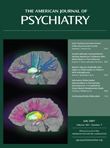To The Editor: In their article, published in the January 2007 issue of the
Journal, Savitha Eranti, M.D., M.R.C.Psych., et al. concluded that “[repetitive transcranial magnetic stimulation] rTMS was not as effective as [electroconvulsive therapy] (ECT), and ECT was substantially more effective for the short-term treatment of depression” (p. 1,
1 ). We feel that these conclusions are preliminary because of several study limitations.
First, the fixed dose of rTMS may have been subtherapeutic. Several recent studies have indicated that the optimal antidepressant effect with rTMS may require 15 to 30 sessions (e.g., up to 90,000 pulses). In the study by Eranti et al., only a maximum of 15,000 pulses was administered. By contrast, ECT was flexibly dosed for optimal efficacy.
Second, the older age (i.e., 63.6 [SD=17.3] years) and prior ECT history in 63% of the patients who received rTMS may represent an “enriched” ECT cohort with a prior positive ECT outcome, thereby explaining the limited cognitive adverse effects, higher discontinuation rate with rTMS, and switches to ECT. Further, prefrontal scalp-to-cortical distance increases with age, and thus the 110% stimulation intensity may have been insufficient.
Third, rater blinding was ineffective. In 76% of the subjects, raters were either informed of or guessed the treatment assignment.
Fourth, a voluminous literature has reported short-term cognitive deficits, particularly with bilateral ECT. The fact that no changes were observed on the Cambridge Cognitive Examination or the mental status exam calls into question the sensitivity of the battery used to detect an ECT effect.
Fifth, in Tables 2 and 3 the degrees of freedom for the interaction term appear to be incorrect (i.e., a 2×3 interaction term should have 2 as the first cited degree of freedom). Further, we calculated an effect size of 0.15 (0.5/3.3) for the Cambridge Cognitive Examination attention and orientation scales, which would require a cohort size of approximately 500 subjects to obtain a p value of 0.05. With a cohort size of 38, the reported p value was 0.004.
Sixth, the authors stated that concurrent medications did not affect the primary outcome variable, but specifics on these treatments by group were not provided.
It seems premature to conclude that ECT is more effective and as well tolerated as rTMS in nonpsychotic patients with depression. Sham-controlled and other rTMS-ECT comparison trials have indicated that a substantial proportion of patients referred for ECT may benefit from rTMS as an alternative
(2) . What is now needed is a large, randomized trial in ECT-naive patients that also examines potential predictors of response.

